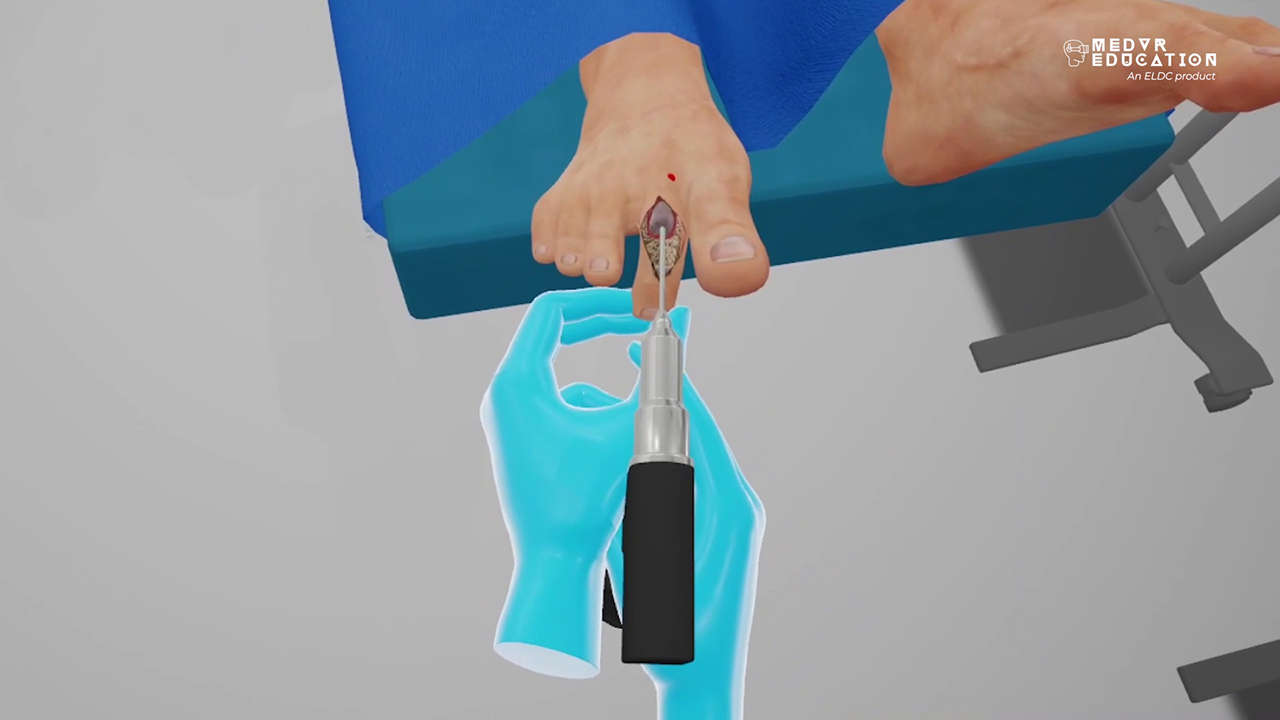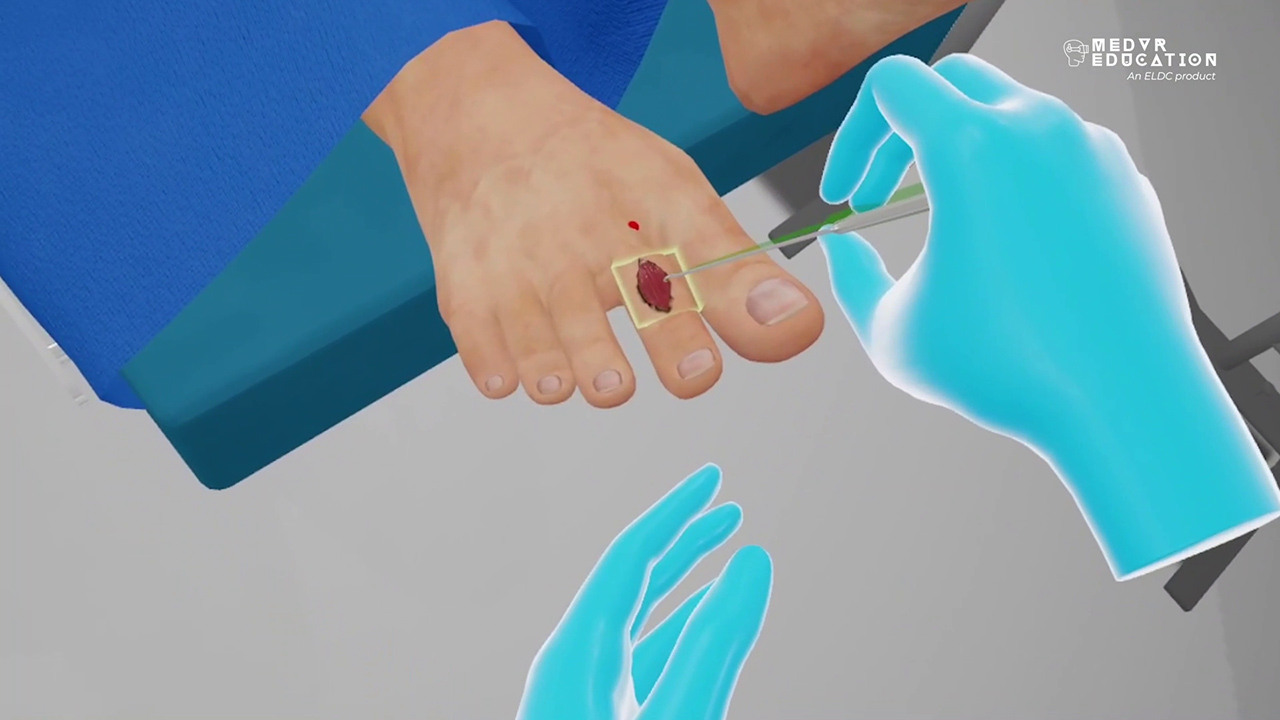Digital Arthroplasty
Hammer toe usually occurs in the second or third toe. It is extremely painful, especially while walking, and makes it difficult to wear closed footwear, even comfortable ones. Digital arthroplasty is one of the most common ways to correct hammer toes. It involves cutting affected ligaments and bones and using pins as fusion devices to bind together the cut bones.
This VR simulation for Digital Arthroplasty is designed to help healthcare practitioners practice the procedure of performing a digital arthroplasty in a safe and controlled virtual environment. With both training and assessment modes, learners can perform the procedure and assess themselves on their performance.
- Accurately identify incision location to access phalanges and PIP joint
- Follow clinically approved techniques to shorten bone
- Practice accurate insertion of fixation device

- Carroll, Robert E.; Taber, Thomas H.. DIGITAL ARTHROPLASTY OF THE PROXIMAL INTERPHALANGEAL JOINT. The Journal of Bone & Joint Surgery 36(5):p 912-920, October 1954.
 Multi-playerSessions
Multi-playerSessions Physics-based Interactions
Physics-based Interactions
Core Skills Training

Digital Arthroplasty
As part of this clinical procedure VR simulation, the user will make a small incision on the affected toe to access the phalanges and the proximal interphalangeal (PIP) joint. Using a rongeur the user will remove the head of the proximal phalanx at the PIP joint, align the toe, insert the fixation device and suture the opening. Bandaging the wound area will complete the procedure. All necessary affordances are provided to complete the procedure with efficiency.
Training
With prompts, guidance and affordances learners are hand-held through the process to practice the procedure in a virtual environment with a virtual patient.
- Photorealistic virtual environment
- Physics-based interactions
- Detailed instructions
- Adequate affordances to assist in task completion

Assessment
Test acquired skills to perform the procedures from start to finish without prompts. An incorrect step will take the learner back to the start to start afresh.
- Live scoring
- Instant feedback
- Adequate affordances for efficient performance
- Time tracking to monitor activity completion






